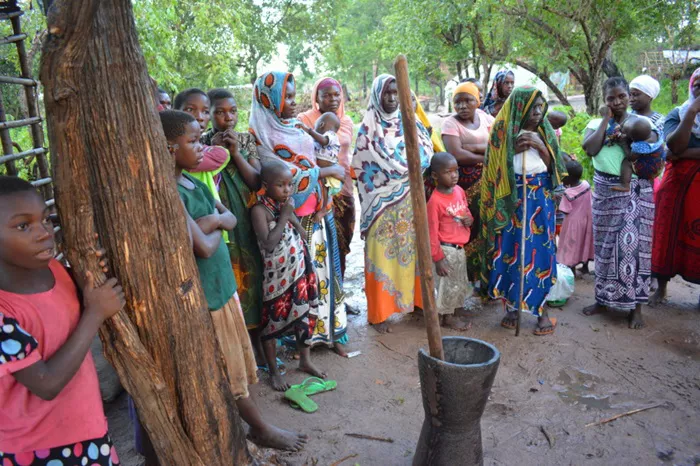Researchers are intensifying efforts to address longstanding disparities in women’s health by investigating the role of the vaginal microbiome in reproductive disorders and gynecologic cancers. New studies are offering critical insights into how microbial communities influence disease outcomes and may lead to more effective, targeted healthcare for women.
Women globally face higher rates of undiagnosed conditions and are more likely than men to experience extended periods of poor health. According to a 2024 McKinsey report, women spend 25% more of their lives in ill health compared to men, largely due to diagnostic delays, insufficient treatment options, and systemic underinvestment in female-specific health research.
Dr. Melissa Herbst-Kralovetz, a professor at the University of Arizona College of Medicine – Phoenix and director of the Women’s Health Research Program, is among those leading the charge to close this gap. She will speak at ASM Microbe 2025 on host-microbiome interactions in the female reproductive tract and their implications for gynecologic health and cancer.
“If we improve women’s health, we improve community health,” Herbst-Kralovetz said. “Women give birth to all of humanity. It’s a public health imperative.”
Vaginal Microbiome Linked to Cervical Cancer
Herbst-Kralovetz and her team are investigating how changes in the vaginal microbiome (VMB)—the diverse community of bacteria within the vagina—can influence the development of diseases such as bacterial vaginosis, sexually transmitted infections, infertility, and cervical cancer.
A healthy vaginal microbiome is typically dominated by Lactobacillus species, which maintain low vaginal pH and suppress harmful bacteria. However, when this balance is disrupted—a condition known as dysbiosis—Lactobacillus levels decrease while anaerobic bacteria such as Gardnerella, Fannyhessea, Prevotella, and Sneathia increase. These shifts have been associated with increased risks for infections and reproductive complications.
Herbst-Kralovetz’s lab is particularly focused on the connection between VMB and cervical cancer, which is caused by persistent infection with human papillomavirus (HPV). Although most HPV infections clear naturally, some women experience persistent infections that can lead to cervical cancer.
“Why can’t some women clear HPV while others do?” Herbst-Kralovetz asked. Her lab’s studies suggest that microbiome composition may play a critical role.
Hispanic Women Face Higher Cervical Cancer Risk
In Arizona, Hispanic women experience disproportionately high rates of cervical cancer. To explore potential causes, the University of Arizona team studied 100 premenopausal women—half Hispanic and half non-Hispanic—and found that cervical abnormalities increased as Lactobacillus dominance declined. Hispanic participants were more likely to have higher vaginal pH and elevated levels of Sneathia, a bacterium associated with reproductive tract disease.
The findings prompted the lab to conduct a systematic global review of studies involving Latina women’s VMB and its relationship to HPV and cervical dysplasia. The review, led by undergraduate researcher Vianney Mancilla, identified only 25 relevant studies published between 2000 and 2022—highlighting a substantial lack of data in this area.
Despite the limited number of studies, the researchers observed a consistent association between certain bacterial species and HPV-related cervical disease. Herbst-Kralovetz stressed the need for more large-scale, rigorous studies to confirm these findings.
“Some bacteria like Sneathia and Fannyhessea appear to be more prevalent in specific racial and ethnic groups and may be linked to cancer risk,” she said. “But we still need to determine whether they are causative or opportunistic.”
Broader Social Determinants Affect Microbiome
The composition of the vaginal microbiome is influenced by a range of social and environmental factors, including housing conditions, hygiene practices, access to healthcare, and education. Herbst-Kralovetz emphasized that these determinants must be addressed in tandem with biomedical research to improve outcomes for underserved communities.
Inclusive Research Methods Are Essential
Efforts to reduce disparities also depend on more inclusive research practices. Although a 1993 law mandated the inclusion of women and minority populations in federally funded clinical research, historical exclusion and ongoing mistrust continue to affect participation.
“Past harms have lasting effects,” Herbst-Kralovetz said. “We need community-based, participatory research to build trust and gather meaningful data.”
Her team recently partnered with Native Americans for Community Action, a Flagstaff-based health clinic, to conduct a pilot study on cervical cancer disparities among American Indian women. The study is part of a 25-year collaboration under the American Indian Cancer Prevention Partnership, supported by the National Cancer Institute. Researchers employ a “two-eyed seeing” approach that combines Western scientific and Indigenous knowledge systems.
Gaps in Data Undermine Public Health Messaging
Comprehensive data collection remains a major challenge. For example, major COVID-19 vaccine trials failed to track menstrual changes, despite widespread anecdotal reports of altered cycles following vaccination. A 2024 study using data from the Natural Cycles mobile app later confirmed that vaccine timing could slightly lengthen menstrual cycles, particularly when doses were administered during the follicular phase.
Although researchers found no evidence linking the vaccine to infertility or adverse pregnancy outcomes, the lack of early data fueled misinformation and public concern.
“Immune cells play a role in the reproductive system’s natural rhythm,” Herbst-Kralovetz explained. “We need to routinely collect menstrual and vaginal health data to better understand how medical interventions affect women across their lifespan.”
Funding for Women’s Health Remains Low
Despite growing awareness, funding for women’s health research remains disproportionately low. In 2020, only 5% of global health research and development spending targeted women’s health, and a mere 1% addressed non-cancer women-specific conditions. Of that, a significant portion was allocated to fertility.
Nevertheless, the private sector is helping bridge the gap. The emergence of “FemTech”—a term coined in 2016—has sparked investment in technology and services related to maternal health, menstruation, gynecologic devices, and digital health tools.
Herbst-Kralovetz and others in the field hope that increased attention, investment, and inclusive research will pave the way toward equitable, science-driven care for all women.
“Closing the women’s health gap isn’t just about fairness,” she said. “It’s about improving health outcomes for entire communities.”
Related Topics

































